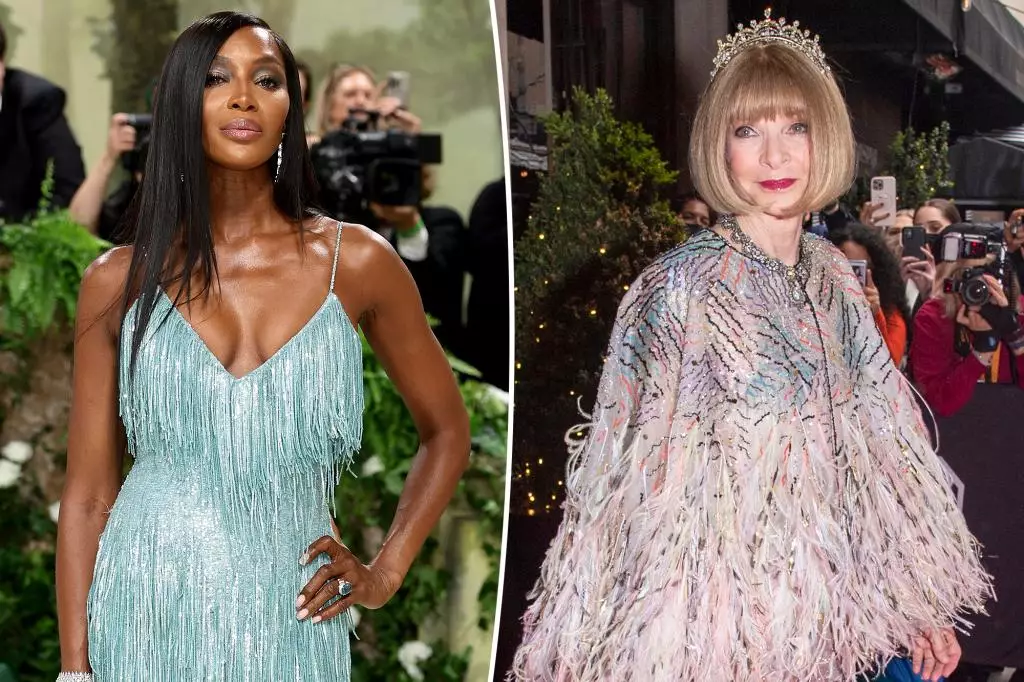In an industry that thrives on visibility and presence, Naomi Campbell’s announcement to skip the 2025 Met Gala resonates with layers of significance. Campbell, a supermodel whose influence on the fashion landscape is undeniable, has been an integral part of Met Gala history, gracing the stairs of the Metropolitan Museum of Art for nearly three decades. Yet, her decision to opt out of this year’s prestigious affair not only raises eyebrows but also hints at complexities that simmer beneath the glamorous surface of the fashion world.
High-profile events such as the Met Gala are often seen as a showcase of artistry and social commentary. The theme for 2025, “Superfine: Tailoring Black Style,” underscores the evolving narrative of Black contributions to fashion. Campbell’s tribute to late stylist André Leon Talley, a seminal figure in both her life and the industry at large, adds an emotional undertone to her absence. This moment forces us to consider not just the event itself, but what it signifies for those who participate—or choose not to.
The Power of Black Dandyism
Campbell’s homage to the theme of the event reveals deeper truths about identity and representation in fashion. The idea of “Black dandyism” illustrates how Black culture has historically asserted itself against the backdrop of oppressive norms, using style as a means of crafting a powerful identity. By acknowledging this legacy, Campbell highlights the importance of ensuring that such narratives are celebrated and recognized within mainstream fashion platforms.
In her Instagram post, Campbell expresses not only regret but also reverence for the artistic evolution that such themes can illuminate. Her absence is thus a statement in itself—a poignant reminder of the ongoing struggles for recognition in the fashion arena. By not physically attending, Campbell is vocal about her stance and perhaps pointing to an inner conflict regarding her relationship with the event’s organizer, Anna Wintour.
A Complex Relationship with Anna Wintour
The recent history between Campbell and Wintour adds layers to the narrative. The public exchange at the 17th Fashion Row Fashion Show revealed a tension that has remained largely unspoken until now. Wintour’s pointed remarks about Campbell’s punctuality were cloaked in humor but hinted at a more profound friction between the iconic model and the influential Vogue editor. Campbell’s subtle shade in response was a form of self-advocacy—asserting her right to interpret her own narrative in a fashion space still grappling with equality and representation.
For many observers, Campbell’s absence from the Gala isn’t merely a snub; it’s a refusal to participate in an environment wherein her value is artistically recognized yet personally contested. Fashion, often perceived as an elite enclave, rarely allows pivotal figures like Campbell to express their discontent without facing backlash or scrutiny. Her message to the audience—“I’m unapologetically truthful”—reflects the tension between her personal experiences and the industry’s institutional norms.
The Echo of Legacy and Representation
In a world increasingly aware of its shortcomings, Campbell stands as a beacon for many aspiring models and fashion enthusiasts. Her long career, marked by 17 Met Gala appearances, feels like a tapestry that weaves together triumphs and trials alike. Her acknowledgment of Wintour’s influence on her career juxtaposes her personal grievances with the larger dialogue about representation, often spurred by figures like Talley, who broke barriers in achieving visibility for Black creatives.
The absence of Naomi Campbell at the Met Gala will undoubtedly be felt not just on a superficial level but in the broader conversation about equity in fashion. By taking a step back, she calls for a reevaluation of how these celebrated spaces can be more inclusive while championing the legacies of those who have come before. Her impact, like fashion itself, is multi-faceted, challenging paradigms and initiating dialogues that extend far beyond red carpets and designer gowns.
As consumers and fans, we must reflect on what this absence could catalyze in discussions around diversity in the fashion world. Campbell’s choices remind us that even in the glamorous ambiance of high fashion, the undercurrents of personal and systemic issues persist, urging us to rethink who gets to bask in the limelight and why.

